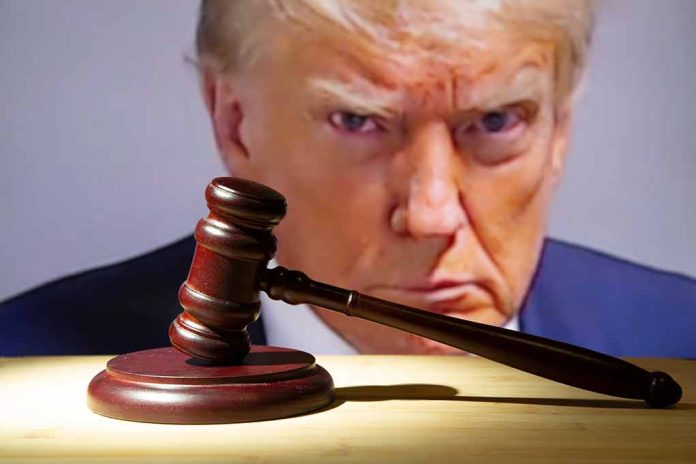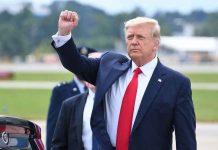
In a pivotal ruling that strengthens presidential authority, the Supreme Court has sided with President Trump, affirming his constitutional power to dismiss heads of independent agencies without cause, while simultaneously signaling potential limits regarding the Federal Reserve.
Key Takeaways
- The Supreme Court’s conservative majority (6-3) has upheld President Trump’s authority to fire independent agency board members, strengthening executive power
- The Court specifically allowed the removal of officials from the National Labor Relations Board and Merit Systems Protection Board, while suggesting the Federal Reserve may be protected due to its “uniquely structured, quasi-private” nature
- The ruling temporarily halts lower court decisions that attempted to reinstate the dismissed officials while their cases proceed through the legal system
- Liberal justices strongly dissented, with Justice Elena Kagan warning this decision breaks with decades of precedent protecting independent agencies from presidential control
- The case could potentially reshape the relationship between the presidency and numerous independent regulatory agencies created since the New Deal era
Supreme Court Backs Presidential Authority Over Independent Agencies
In a decision that significantly expands presidential power, the Supreme Court has ruled that President Trump can dismiss the heads of two key independent regulatory agencies without cause. The 6-3 decision allows the removal of Gwynne Wilcox from the National Labor Relations Board and Cathy Harris from the Merit Systems Protection Board, overturning lower court rulings that had ordered their reinstatement. This represents a major victory for the Trump administration’s efforts to assert greater control over the federal bureaucracy and underscores the Court’s increasingly broad interpretation of executive authority.
The Supreme Court’s unsigned order indicated that the Constitution may permit the president to fire these board members “without cause,” contradicting decades of precedent that has protected independent agencies from direct presidential control. The decision temporarily halts an appellate ruling that had reinstated the dismissed officials while their cases proceed through the federal court system. The firings have effectively paralyzed these agencies, as they now lack sufficient board members to issue final decisions, and President Trump has not yet appointed replacements.
Federal Reserve May Remain Protected Despite Ruling
Despite the Court’s expansive view of presidential power in this case, the conservative majority signaled that their ruling might not extend to all independent agencies. Most notably, the Court suggested that the Federal Reserve’s unique structure may protect it from similar presidential intervention. The majority specifically addressed concerns that their decision could lead to the firing of Federal Reserve officials, stating that the central bank has a distinctly different legal and historical foundation compared to other regulatory bodies.
“The Federal Reserve is a uniquely structured, quasi-private entity that follows in the distinct historical tradition of the First and Second Banks of the United States,” stated the Supreme Court majority..
This distinction is particularly significant given President Trump’s previous criticisms of Federal Reserve Chair Jerome Powell over interest rate policies. Solicitor General D. John Sauer reinforced this position during arguments, maintaining that firing Federal Reserve governors represents a separate legal issue not addressed by this case. The Court’s careful carve-out for the Federal Reserve indicates that while presidential power has been expanded, it may not be unlimited when it comes to all independent regulatory bodies.
Liberal Justices Sound Alarm Over Precedent and Independence
The Court’s three liberal justices issued a forceful dissent, with Justice Elena Kagan leading the criticism of what she characterized as an unprecedented expansion of presidential power. Her dissent emphasized that this decision breaks with decades of established legal precedent dating back to the 1935 Supreme Court case Humphrey’s Executor, which established that presidents cannot fire independent board members without cause. This New Deal-era precedent formed the legal foundation for numerous independent regulatory agencies created since.
“Not since the 1950s (or even before) has a President, without a legitimate reason, tried to remove an officer from a classic independent agency,” said Justice Elena Kagan.
Kagan and her fellow liberal justices warned that the Court’s decision indicates a troubling shift toward a more “unitary and subservient administration” where independent agencies would effectively lose their independence. This could potentially undermine their ability to make regulatory decisions based on expertise rather than political considerations. The dissenters were joined in their concerns by attorney Neal Katyal, who represented the dismissed officials and warned during arguments that allowing presidents to fire independent agency officials at will would lead to “chaos.”
Implications for Presidential Power and Agency Independence
This ruling represents a significant victory for conservative legal theorists who have long argued that independent agencies unconstitutionally limit presidential power. The decision aligns with the “unitary executive” theory, which holds that the Constitution grants the president complete authority over the executive branch, including independent agencies. While the case continues through the appeals process and may return to the Supreme Court for a final ruling on the merits, this interim decision already signals a potentially fundamental reshaping of the relationship between the presidency and the administrative state.
“The Government faces greater risk of harm from an order allowing a removed officer to continue exercising the executive power than a wrongfully removed officer faces from being unable to perform her statutory duty,” stated the Supreme Court majority, emphasizing their view that presidential authority takes precedence.
The immediate practical impact of the ruling leaves the NLRB, which resolves thousands of unfair labor practice cases annually, and the Merit Systems Protection Board, which reviews federal worker disputes, without sufficient members to function properly. This paralysis could significantly impact labor relations and federal workforce management, particularly as the Trump administration seeks to implement reforms. The decision also raises questions about whether other independent agencies might face similar presidential interventions in the future, potentially transforming how regulatory policy is implemented across the federal government.





